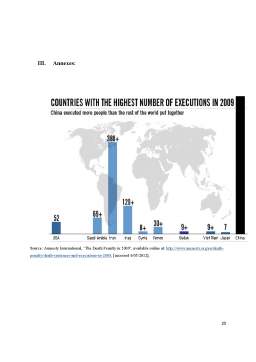Cuprins
- I. EU-China
- 1.1. A Short Overview of the EU-China Relations (p.3- 7)
- 1.2. Present Areas of Concern for the EU-China Relations (p.7- 12)
- II. China-Africa-EU
- 2.1. EU-Chinese Interests in Africa and Imminent Challenges (p.13-16)
- 2.2. China and Arms Trade in Africa in Africa. Case Study: Zimbabwe (p.16-19)
- III. Annexes (p.20)
- IV. Bibliography (p.21-24)
Extras din referat
Introduction:
In this essay, I will try to focus on the Sino-European relations, in correlation with their ever-emergent interests inside the African continent. In an effort to better understand the military aspect of the matter, the enclosing case study comes as a somewhat practical support for the theoretical chapters that precede it. Following the logical structure above-presented in the table of contents, the essay is structured based on two important pillars: first, it endeavors to approach the Sino-European relation from a historical perspective, understanding its deep historical ties; on such a basis, the paper tries to approach distinct controversial issues, such as human rights, the death penalty, intellectual property theft and the arms embargo.
Referring to the latter, the problem will be further developed throughout the second part of the paper. This subsequent part focuses mainly on the European and Chinese interests in constructing bonds with African countries. As it will be seen, they tend to forge strong economic ties above all, enforcing peace and stability in the region, developing the economy and advancing social progress, so as to better promote cooperation in a large array of domains, and, why not, maybe later, in the energy resources sphere also.
The paper has envisaged the following, under some degree, of the line of our course, but further emphasizing on the international community’s response and thus adopting an institutionalist methodological approach.
I. 1.1. A Short Overview of the EU-China Relations
When endeavoring to redescribe China in the contemporary context, many scholars helped themselves in the process by giving birth to new definitions and shaping new, more challenging, approaches. In a similar attempt, Cambridge Professor of the History and Politics of Modern China, Rana Mitter, underlined the “plural” character of the current relations between the Union and the Popular Republic, centered on an increasingly culturally cosmopolitan area: ‘China is a continent, not just a country. It is a series of identities, some shared, some differentiated, and some contradictory: modern, Confucian, authoritarian, democratic, free, and restrained. Above all, China is a plural noun.’
Trying to understand these relations in the present international context, it is of utmost importance to adopt a historically-centered analysis. More importantly, it becomes fairly substantial to consider an approach based on the interpretation of singular intra-state relations, as a complementary piece of information regarding China’s disputed links to the present European Union. Accordingly, it becomes essential to remember 1514 as the year of the first European-Chinese interactions, along with the Portuguese arrival in China via Macau. Within the European Union, however, singular independent relations have been established between particular states and China. Thus, Sino-German relations started as early as the 1700s as purely commercial ties, only to be now represented by German internationally known companies like Siemens or Volkswagen, with branches in China also. Moreover, starting with the 19th century, we can notice a particular German interest in opening banks in Asia, with the Deutsch-Asiatische Bank (1890) as a salient example. With the passing of time, Germany became China’s leading trading partner inside the Union. Nowadays, Germany is China’s biggest trading partner and technology exporter in Europe and the amount of German investment in China ranks second among European countries, after the United Kingdom. Outside the European Union, China is Germany's second largest trading partner, after the United States. According to the Chinese government’s reports, the trade volume between China and Germany amounted to roughly 100 billion U.S. dollar in 2008.
Preview document
Conținut arhivă zip
- Tilateral cooperation EU-China-Africa.docx
























